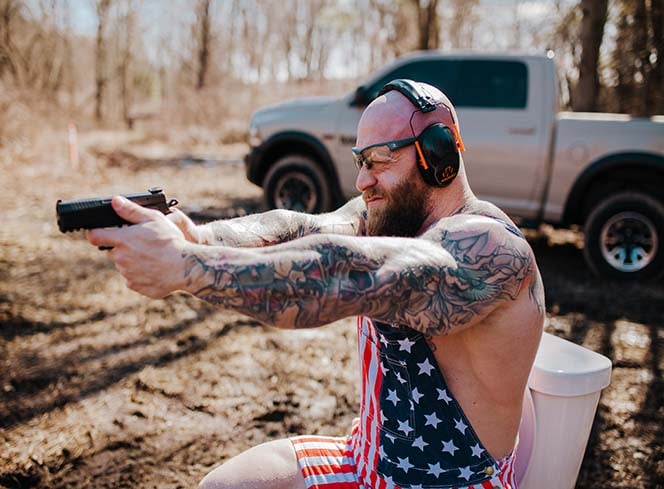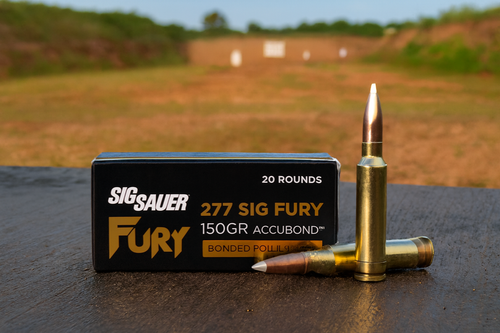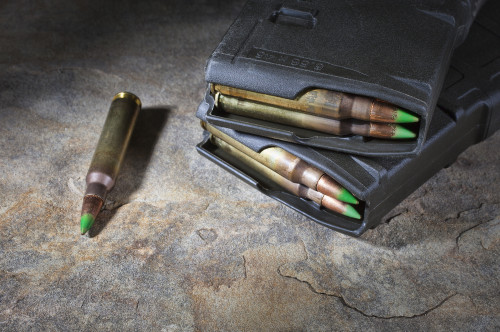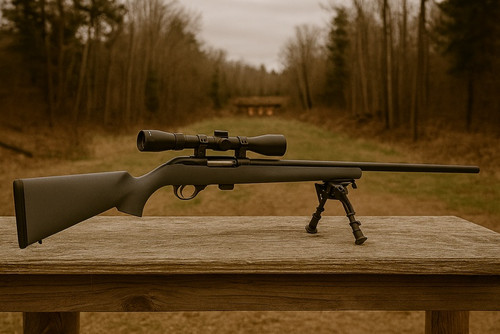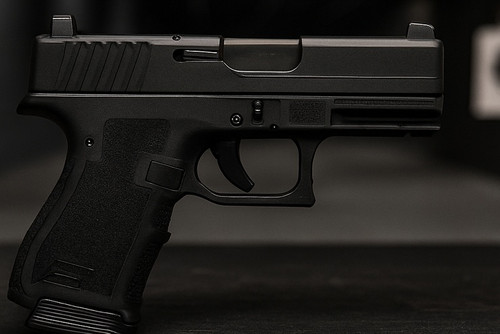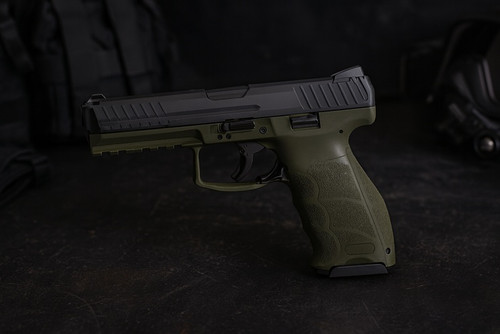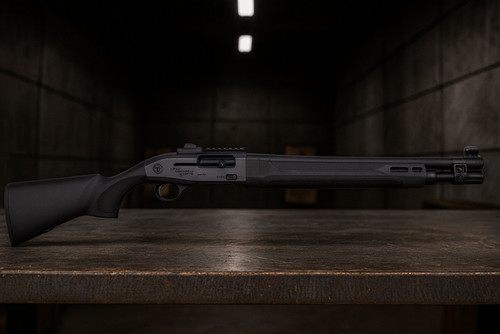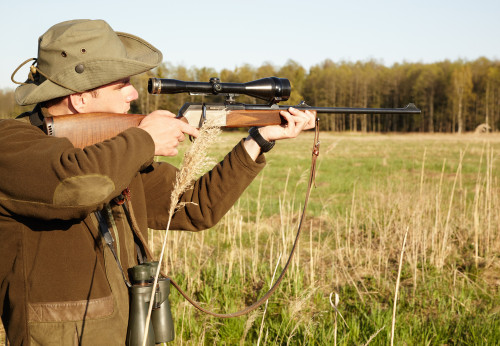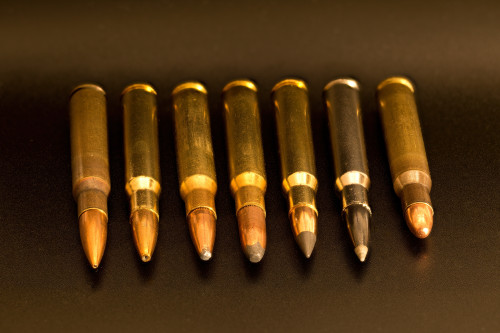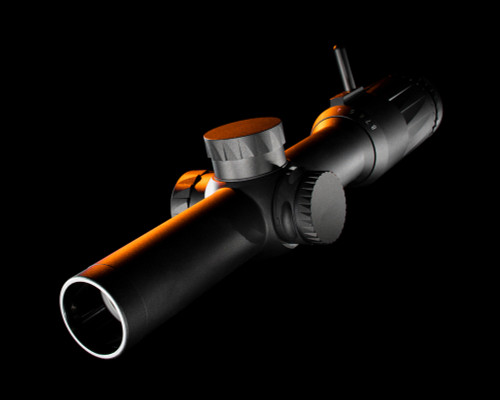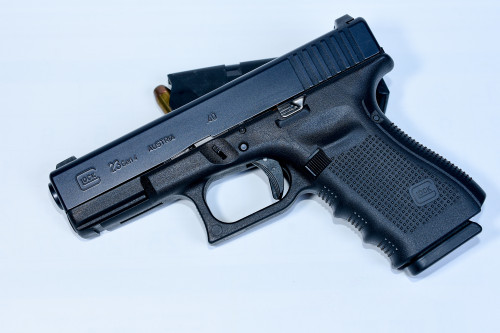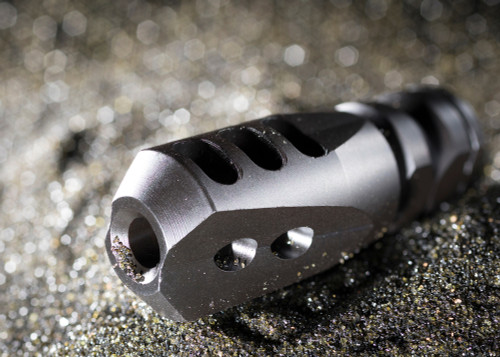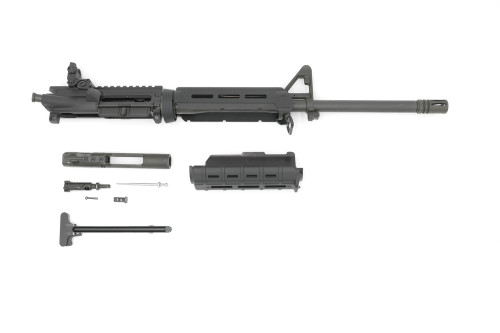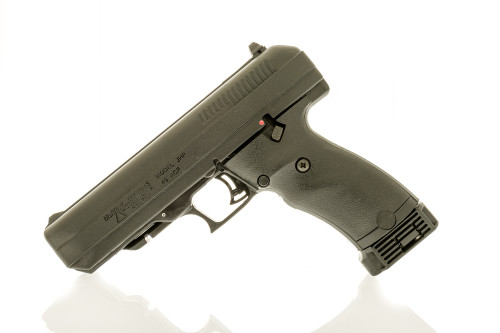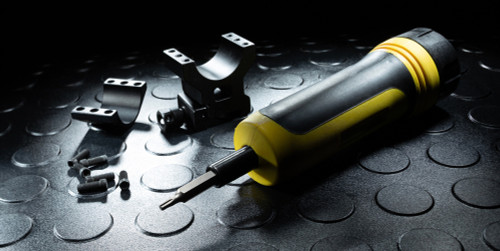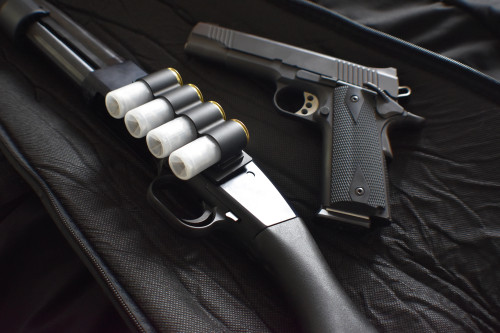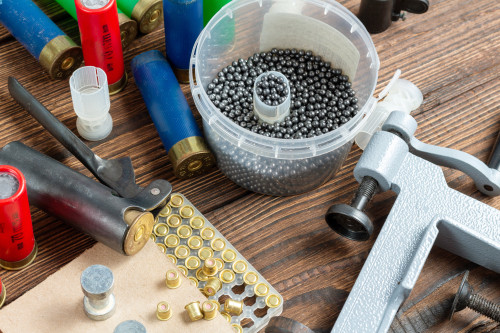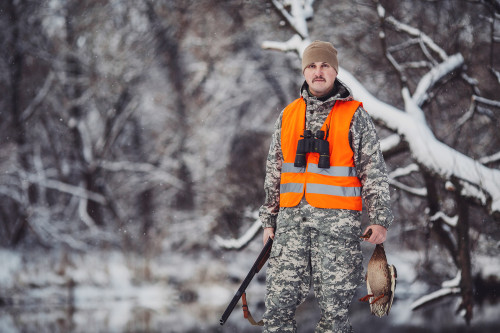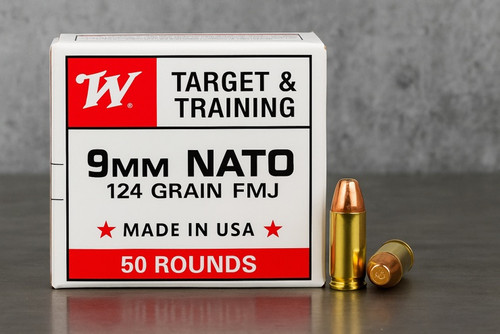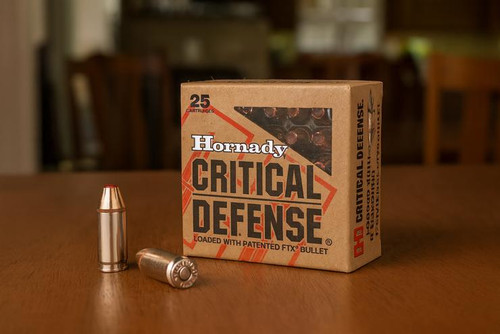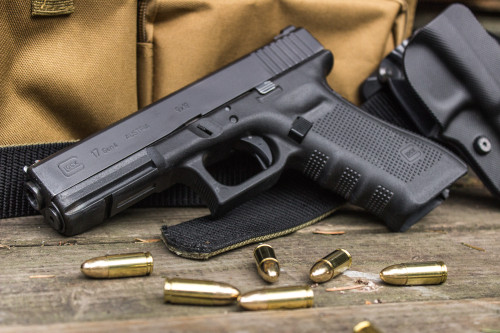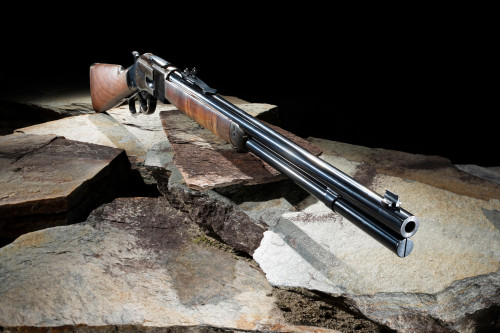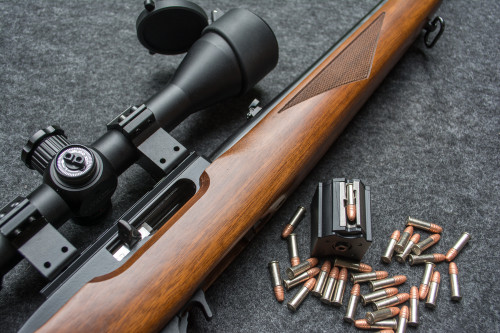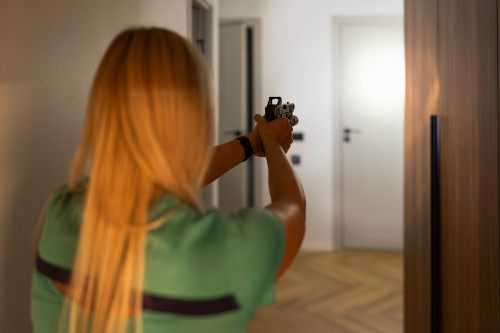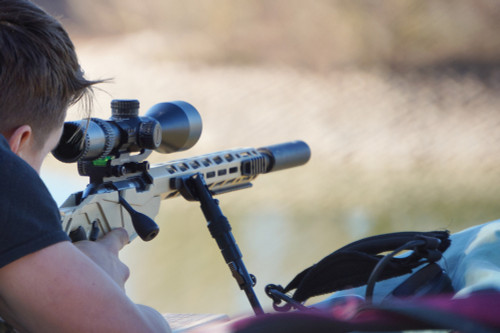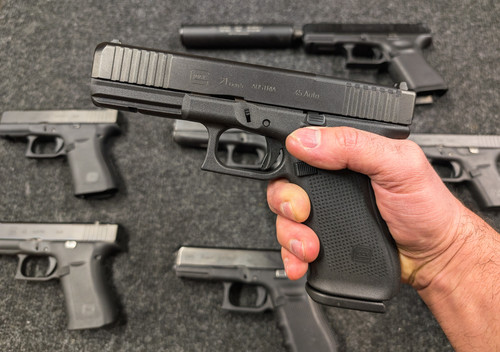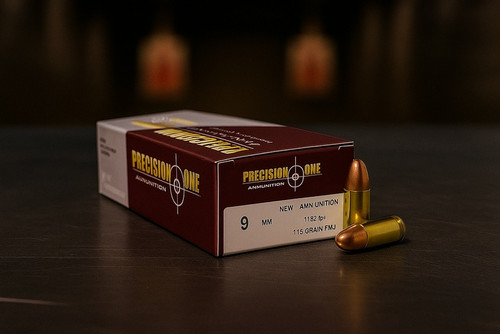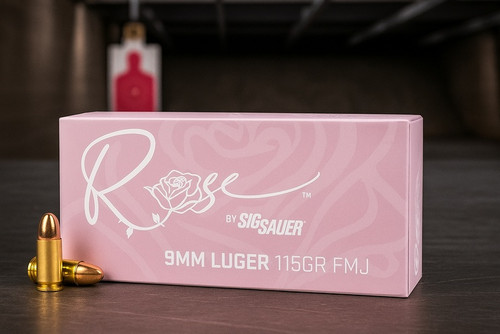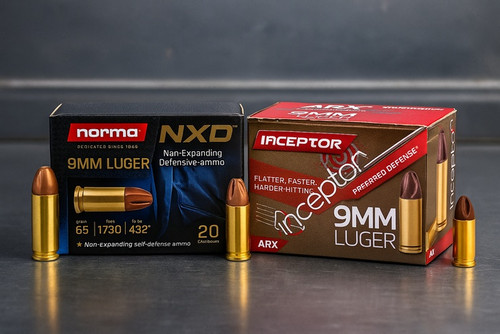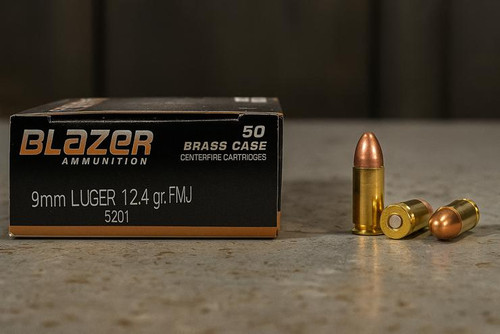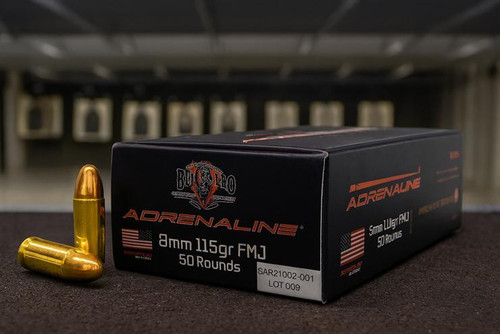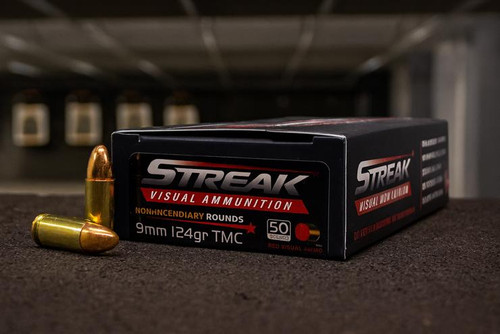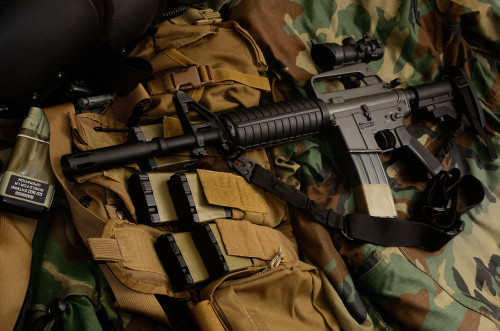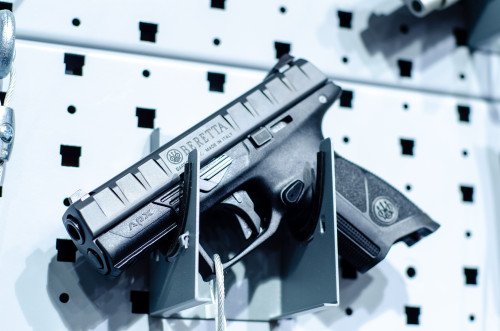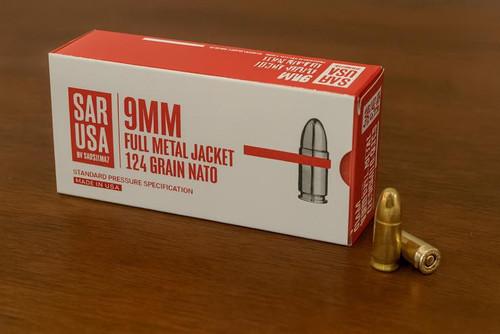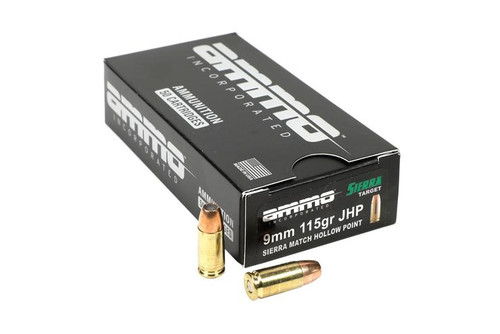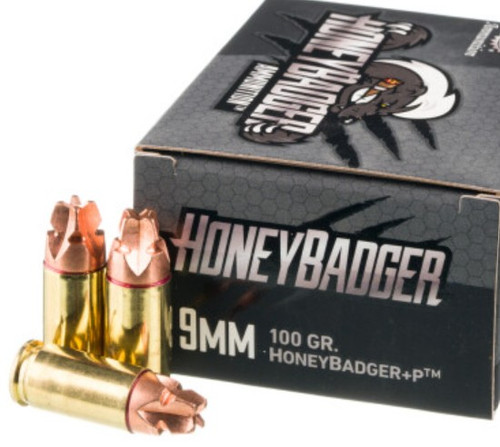The gun world loves its debates, and few discussions get as heated as comparing 7.62 NATO and 5.56 NATO rounds. Both cartridges have earned their places in military and civilian use, each with distinct advantages in different situations.
This guide cuts through the noise to help you pick the right round based on what you actually need. No marketing hype – just facts about real-world use, performance, and purpose. Ready to settle this debate once and for all? Let's jump in.
The Origins
History of 7.62x51mm NATO
The 7.62x51mm NATO came about as a modernized alternative to the older .30-06 cartridge. In the mid-20th century, NATO standardized this round for its forces. The military needed something powerful but shorter than the .30-06.
Today, the 7.62 NATO continues to serve in designated marksman rifles, machine guns, and sniper platforms across military units worldwide. Its civilian counterpart, the .308 Winchester, is dimensionally similar but differs in chamber pressure and headspace tolerances. The .308 Win is typically loaded to higher pressures (around 62,000 psi) compared to 7.62 NATO (approximately 60,000 psi), and it is chambered with tighter tolerances. Despite these differences, the .308 remains one of the most popular hunting rounds in North America.
History of 5.56x45mm NATO
The 5.56x45mm NATO evolved from the .223 Remington cartridge. It gained popularity during the Vietnam War when the U.S. military needed a lighter round that troops could carry in greater quantities.
After some early challenges, the 5.56 became the standard infantry round for NATO forces. The smaller, lighter cartridge allowed soldiers to carry significantly more ammunition into battle—a tactical advantage that proved its worth in combat situations.
Size, Weight & Carrying Capacity
The size difference between these rounds becomes obvious when you hold them side by side. The 7.62x51mm is noticeably larger and heavier than the 5.56x45mm.
Let's break down what this means in practice. A standard 30-round magazine of 5.56 weighs about 1 pound (16 ounces). Compare that to a 20-round magazine of 7.62, which weighs about 1.1 pounds (17.6 ounces). You get 10 fewer rounds but more weight with the 7.62.
For military applications, this translates to a dramatic difference in loadout. A soldier can typically carry 210 rounds of 5.56 (7 magazines) for roughly the same weight as 140 rounds of 7.62 (7 magazines). That's 70 extra rounds—a significant tactical advantage in prolonged engagements.
Cost Breakdown: Which Round Saves You More?
Your wallet feels the difference between these calibers quickly. The 5.56/.223 stands out as the more affordable option for regular use and training.
In normal market conditions (not during shortages), 5.56 NATO ammunition typically costs 30-50% less than 7.62 NATO rounds. For example, basic 5.56 practice ammo might run 40 cents per round, compared to 60-75 cents for comparable 7.62 NATO ammunition.
This price gap matters a lot if you shoot regularly. Firing 1,000 rounds of 5.56 instead of 7.62 could save you $200-$350—enough for a new optic or other gear. Who doesn't like saving money?
During ammunition shortages, both calibers become scarce, but 5.56 tends to return to store shelves faster due to its higher production volume.
Power & Ballistic Performance Compared
This is where the 7.62 NATO really flexes its muscles. The bigger round delivers substantially more energy downrange.
Looking at the numbers: a standard 7.62 NATO M80 round retains over 1,700 foot-pounds of energy at 500 yards. The 5.56 M855A1 holds just 950 foot-pounds at the same distance. That extra energy translates to better penetration and more effect on the target.
At 1,000 yards, the difference becomes even more dramatic. While the 7.62 NATO drops below 1,000 foot-pounds before reaching this distance, it still retains around 1,000 foot-pounds at 600–700 yards—enough to remain effective in many long-range scenarios. The 5.56 simply runs out of steam.
For hunting purposes, this energy gap means the 7.62/.308 can humanely take down larger game like deer, elk, and bear. The 5.56/.223 is best suited for varmints and small game, though it can be effective for medium game like whitetail deer within approximately 100 yards when using proper hunting bullets such as the Barnes TSX or Nosler Partition.
Recoil, Muzzle Rise & Comfort
Anyone who's fired both calibers knows immediately: 5.56 produces much less recoil and muzzle rise than 7.62.
The lower recoil of the 5.56 makes it easier to control during rapid fire. New rifle users often feel more comfortable starting with a 5.56 rifle before moving up to the more powerful 7.62. The reduced muzzle movement also helps with quicker follow-up shots—critical in both tactical situations and competitions.
Rifles chambered in 7.62 NATO kick noticeably more. This stronger recoil can slow down shot sequences and requires more practice to manage effectively. Many experienced rifle folks find the recoil manageable, but it demands more technique and strength, especially during long shooting sessions.
Best Use Cases for 5.56 NATO

The 5.56 NATO excels in several key scenarios that match its design purpose.
For close-quarters combat and home defense, the 5.56 offers excellent control with minimal recoil. Its moderate power reduces the risk of over-penetration through walls—a serious concern in home defense situations.
Target shooting benefits from the 5.56's low cost and gentle recoil. Therefore you can practice longer without fatigue or breaking the bank. The round performs best within 300 yards, though capable marksmen can stretch this to 500 yards.
For tactical applications requiring high-volume fire and lighter loadouts, nothing beats the 5.56. Its combination of reasonable power, low weight, and high capacity makes it perfect for scenarios where mobility matters.
The AR-15 platform chambered in 5.56/.223 remains the most popular semi-automatic rifle in America partly because of these practical advantages. Ever wonder why so many people own AR-15s? These benefits explain a big part of that popularity.
When to Choose 7.62 NATO

The 7.62 NATO shines in scenarios that demand power and distance.
Long-range shooting beyond 500 yards becomes much more practical with 7.62 NATO. The heavier bullet resists wind deflection better and carries more energy downrange. For this reason, it makes hits at 600–800 yards achievable for most shooters using standard rifles. Reaching out to 1,000 yards is possible, but typically requires specialized rifles and match-grade ammunition.
Precision rifle competitions often favor the 7.62 NATO for these ballistic advantages. The round's inherent accuracy potential in quality rifles makes it a staple at matches across the country.
For hunting medium to large game, the 7.62/.308 has proven itself over decades. The round delivers enough energy for clean, ethical harvests of deer, elk, and similar-sized animals out to responsible hunting distances.
Both bolt-action and semi-automatic rifles perform exceptionally with this cartridge. That is why it offers hunters and target enthusiasts plenty of platform choices.
Popular Rifles & Ammo Picks for Each Round
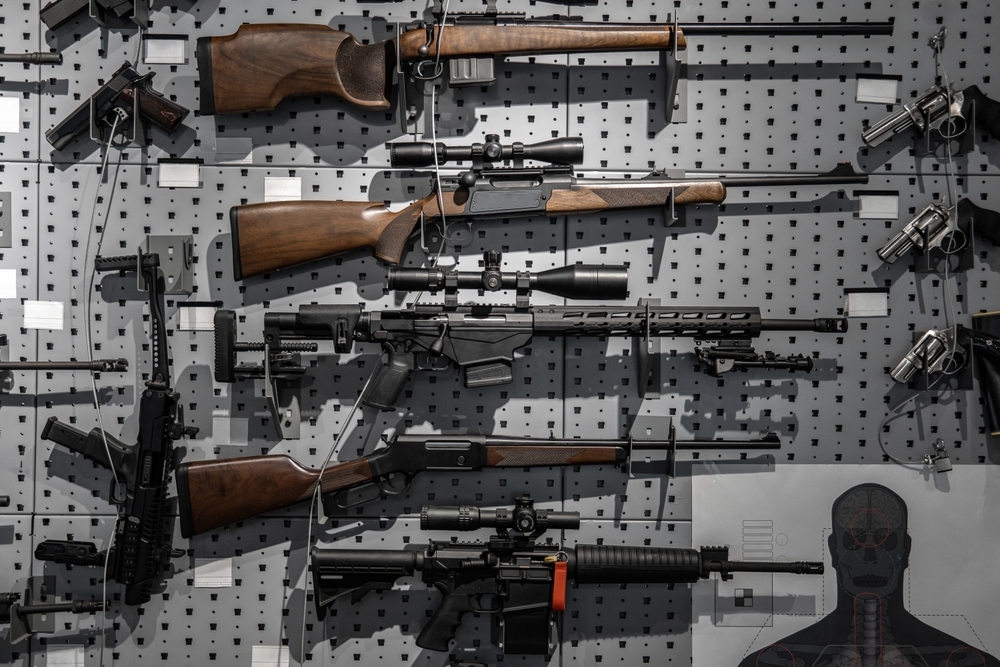
5.56/.223 Ammunition Options:
Federal American Eagle XM193 55gr FMJ stands out as a go-to practice round with consistent performance and reasonable pricing.
For defensive use, Hornady Frontier 5.56 NATO 68gr BTHP and Federal Premium 5.56 NATO 77gr Sierra MatchKing both offer excellent accuracy and terminal performance.
Budget-conscious folks often turn to Wolf Gold .223 55gr FMJ, which delivers surprising quality for its price point.
One important note when discussing 5.56 NATO is its close relationship to .223 Remington, which is often thought of as interchangeable but isn’t exactly the same. If you’d like a detailed breakdown of how these two cartridges compare, check out our .223 vs 5.56 NATO guide.
7.62/.308 Ammunition Choices:
Federal Gold Medal Match 168gr Sierra MatchKing ranks among the most consistent factory match ammunition available.
For hunting, Federal Premium Vital-Shok 165 gr Trophy Bonded Tip delivers controlled expansion and deep penetration on game animals.
PMC Bronze .308 Winchester 147gr FMJ offers good value for practice and general shooting.
Just like .223 and 5.56, there’s often confusion between 7.62 NATO and its commercial counterpart, .308 Winchester. For a closer look at chamber pressures, case dimensions, and interchangeability, see our full .308 vs 7.62 NATO comparison.
Notable Rifles:
For 5.56 NATO, the AR-15 platform dominates the market with countless manufacturers offering quality options. The Ruger AR-556, Smith & Wesson M&P15, and BCM RECCE-16 represent different price points with proven track records.
In 7.62 NATO, the AR-10 platform provides a familiar manual of arms for AR-15 users. The Savage MSR 10 Hunter, Aero Precision M5, and Daniel Defense DD5 cover various price brackets.
Traditional options like the M1A from Springfield Armory and the FN SCAR 17S bring different manuals of arms but proven 7.62 performance.
Choosing Based on Purpose
The "better" round truly depends on what you need it to do.
For home defense and general range use under 300 yards, the 5.56 NATO makes sense. Its lighter recoil, higher capacity, and lower cost create a practical package for most civilian rifle owners.
Need to reach out past 500 yards or hunt a larger game? The 7.62 NATO gives you the extra power and distance you need, despite the added weight and cost.
Many experienced gun owners eventually end up with rifles in both calibers. This approach gives you maximum flexibility to match your tool to your task—be that long-range precision shooting or high-volume tactical training.
The question isn't which round is better overall, but which better serves your specific needs right now.
7.62 vs. 5.56 NATO – Comparison Table
| Category | 5.56 NATO | 7.62 NATO |
|---|---|---|
| Origin & Development | Developed from .223 Remington; adopted during Vietnam War for lighter carry and higher ammo count | Derived from .30-06; standardized mid-20th century for power and range |
| Size & Weight | Smaller and lighter cartridge | Larger and heavier cartridge |
| Ammo Capacity per Loadout | Approx. 210 rounds in 7 magazines (~same weight as 140 rounds of 7.62) | Approx. 140 rounds in 7 magazines (heavier overall) |
| Cost per Round (avg.) | Around $0.40 (normal market) | Around $0.60–$0.75 (normal market) |
| Effective Range | Effective up to 300–500 yards | Effective beyond 800–1000 yards |
| Recoil & Control | Low recoil, easier to control for rapid fire and new shooters | Higher recoil, requires more control and training |
| Best Use Cases | Home defense, CQB, range practice, lightweight tactical use | Long-range shooting, precision matches, large game hunting |
| Popular Rifle Platforms | AR-15, M4, Ruger AR-556, S&W M&P15 | AR-10, M1A, FN SCAR 17, Daniel Defense DD5 |
| Hunting Suitability | Limited to small/medium game (e.g., varmints, whitetail deer) | Suitable for medium to large game (e.g., deer, elk, bear) |
Conclusion
Both the 7.62 NATO and 5.56 NATO have earned their reputations through decades of military and civilian use. Neither round is "better" in all situations—each excels in its intended role.
The 5.56 NATO gives you a lighter-recoiling, higher-capacity option excellent for ranges under 300 yards. The 7.62 NATO delivers superior power and ballistic performance, especially at extended ranges and for hunting applications.
Your choice should match your mission. Look at your typical shooting distance, intended use, budget for both rifle and ammunition, and physical abilities when deciding between these proven cartridges.
Better yet, try both if you can. Hands-on experience tells you more than any article ever could. The right round isn't about internet arguments—it's about what works best for you.
FAQs
1. Can I shoot .223 Remington in a 5.56 NATO chamber?
Yes, you can safely fire .223 Remington ammunition in a 5.56 NATO chamber. However, the reverse is not true—5.56 NATO ammunition should not be fired in a rifle chambered specifically for .223 Remington due to higher pressures.
2. What's the effective range difference between 5.56 and 7.62 NATO?
The 5.56 NATO is most effective up to about 300-500 yards, depending on the barrel length and ammunition. The 7.62 NATO remains effective beyond 800 yards with proper equipment and training.
3. Which round is better for home defense?
The 5.56 NATO is generally considered better for home defense due to its lower recoil for faster follow-up shots and reduced risk of over-penetration through walls compared to the 7.62 NATO.
4. Is the .308 Winchester the same as 7.62 NATO?
They are dimensionally similar but not identical. Modern rifles chambered for 7.62 NATO usually handle .308 Winchester safely, but caution is advised—especially with older surplus rifles, where firing commercial .308 can be potentially unsafe. Additionally, some 7.62 NATO military surplus ammunition may have pressure variations not ideal for all commercial .308 rifles.
5. How much more does 7.62 NATO ammunition typically cost compared to 5.56?
On average, 7.62 NATO ammunition costs 30-50% more than comparable 5.56 NATO ammunition, though prices fluctuate based on market conditions and ammunition shortages.
6. Can I hunt big game with 5.56 NATO?
It's not recommended for ethical reasons. The 5.56 NATO lacks sufficient energy for clean kills on larger game. The 7.62 NATO/.308 Winchester is much better suited for deer, elk, and similar-sized animals.



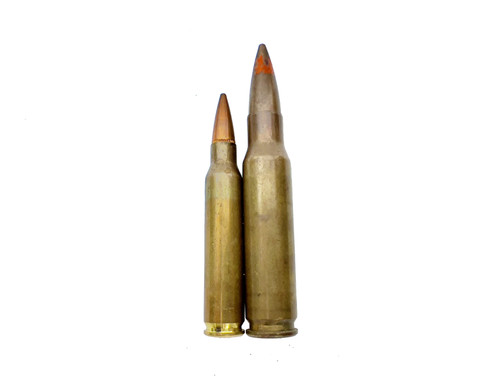
 Pro Armory Editorial Team
Pro Armory Editorial Team